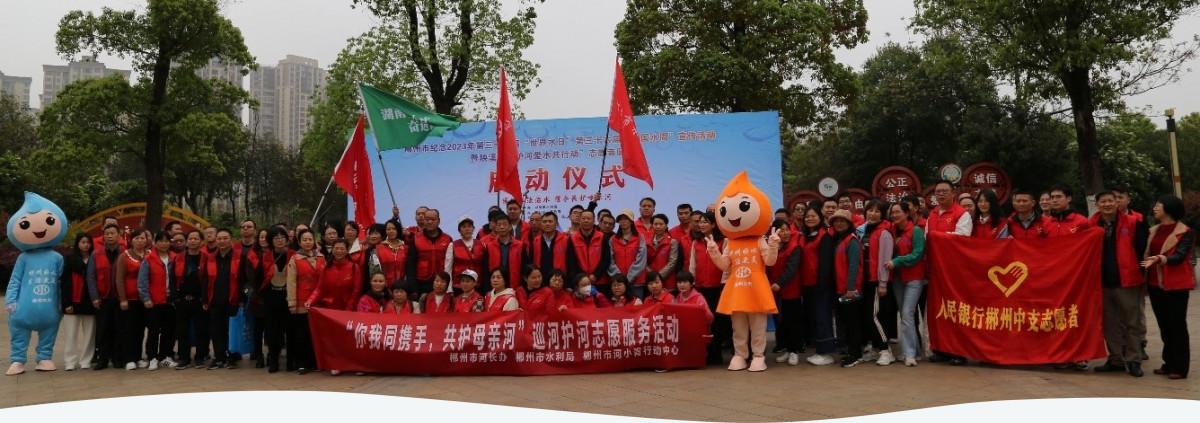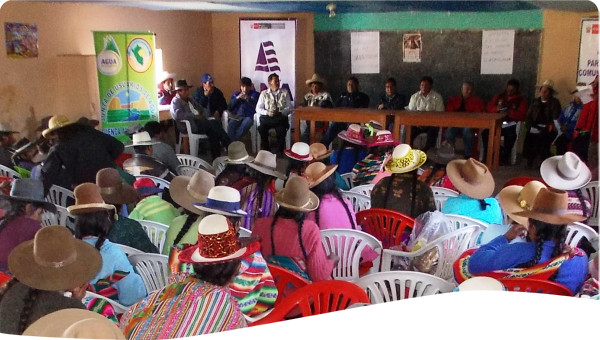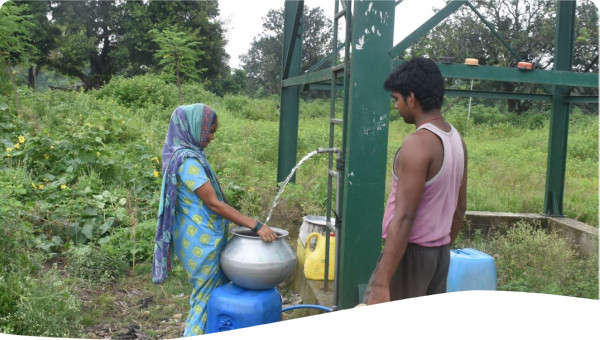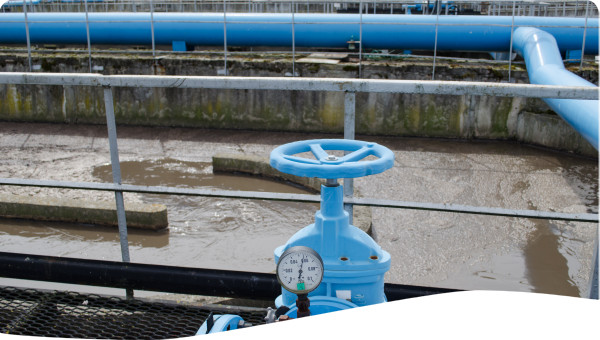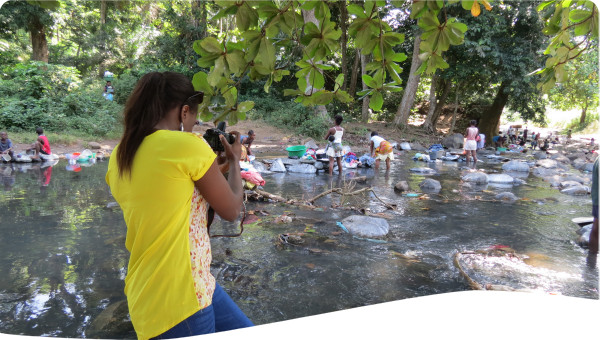Aiming to become a water-saving society, the government of the People’s Republic of China has been establishing several programmes and strategies for limiting demand and enhancing water efficiency. This includes, installing water metering facilities; conducting water balance tests; promoting water-saving technologies and facilities; conducting water-saving publicity and education activities; and strengthening the basic water-saving management. This case study summarizes the experience of installing water-saving units and promoting water-savings behaviours in public institutions in Hunan Province.
Water scarcity is a major challenge for China's sustainable economic and social development in the coming decades and beyond. Rapid urbanization, industrialization, and population growth have placed immense pressure on the country's water resources. Uneven distribution of water resources across different regions exacerbates the problem, with the arid northern regions grappling with severe scarcity while the southern regions experience water abundance. Pollution from industrial discharge and agricultural runoff further compounds the issue, rendering a substantial portion of available water unfit for consumption.
In order to ensure water security, the 19th CPC National Congress clearly proposed to implement the nationwide water conservation campaign, making water conservation a commitment of the nation and an action taken by all people. One of those measures has been to promote water savings within public institutions. The government has established the Regulations on Practicing Thrift and Opposing Waste in Party and Government Bodies as an important priority in the implementation of its national water conservation policy and strategy. Since 2014, Hunan Province has proactively advocated for public institutions to spearhead water conservation efforts, following the guiding principle of "batch establishment and comprehensive advancement." This initiative not only establishes a standard for water conservation throughout society, playing a commendable leadership role, but also holds significant importance in expediting the shift from indiscriminate water use to efficient utilization. Furthermore, it contributes to heightened awareness of water conservation across the entire society.
Since the initiation of the installation of water-saving units in public institutions nationwide in China, some progress has been made. However, there are persistent weaknesses that require attention, including a limited capacity for effective leadership and exemplariness. The issues primarily stem from a lack of water-saving awareness and enthusiasm among certain leaders of public institution about implementing new water-saving units, as well as deficiencies in water metering facilities, incomplete basic information, insufficient financial investment, and an imperfect rewards and penalties mechanism in some public institutions. Addressing these challenges is essential for the continued improvement of water conservation efforts in these institutions.
In 2015, the Chenzhou Municipal Water Conservancy Bureau launched the building of water-saving units and implemented several actions to save water and promote water efficiency:
(1) Strengthen organizational leadership and improve the management system
In 2015, the Chenzhou Municipal Water Conservancy Bureau launched the building of water-saving units, established a water conservation office within the Bureau, designated a water-saving commissioner, implemented the water-saving post responsibility system, and formulated a water-saving management system. In 2019, the Chenzhou Municipal Water Conservancy Bureau revised the Water-saving Management System of the Chenzhou Municipal Water Conservancy Bureau in accordance with the requirements for the building of water-saving units in the water conservancy industry. In 2021, the Bureau further improved the water-saving management system and mechanism, and formulated a range of systems including Water-saving Work Conference System, Water Metering Management System, Water-saving Statistics System, Daily Inspection and Regular Maintenance System of Water Facilities, Planned Water Consumption and Quota Management System, and Water Conservation Reward and Punishment System.
(2) Implement water-saving technologies and practices
Since 2018, the Chenzhou Municipal Water Conservancy Bureau has invested RMB 1.467 million in the water-saving transformation of central air conditioning, the procurement of water-saving and water purification systems, and the water-saving technical transformation of office buildings. All water-using appliances and equipment have been updated to water-saving appliances and equipment to save water from the source. The online water metering system has been introduced, with 10 electronic water meters installed in the secondary water consumption units and main water use areas, realizing remote meter reading and valve control. The Bureau has also carried out the inspection and repair of pipeline leakage, and repaired 2 historical leakage points.
(3) Increase publicity and education to create a water-saving atmosphere
The Chenzhou Municipal Water Conservancy Bureau has compiled and printed the Water Conservation Behavior Manual for Water Conservancy Staff, Water Conservation Proposal and Water Conservation Knowledge Manual, which are distributed to the employees of the units and the residents of the office compound. The Bureau has organized special lectures on water conservation knowledge, inviting the legal counsel of the Bureau to interpret the Hunan Provincial Water Conservation Management Measures for cadres and employees. Water-saving slogans are pasted next to the faucets in the toilets, water-saving posters are hung on each working floor and in front of the water conservancy restaurant, a series of themed publicity boards of "Family Water-saving Tips" are placed in the lobby of the office building, two new LED display boards are erected in front of the office building for rolling display of water-saving propaganda slogans, and public service videos and documentaries about water-saving knowledge are played every month in the lobby on the first floor, to convey the concept of water-saving to employees and publicize water-saving knowledge in multiple dimensions.
(4) Utilization of unconventional water sources
An unconventional water storage and utilization system has been established to collect rainwater from the roof of the office building of the Water Conservancy Bureau, wastewater from pure water purifiers, and condensate from air conditioners, which are stored to a 300 m3 storage tank after precipitation, filtration and disinfection and used for greening and cleaning in the office compound of the Water Conservancy Bureau, with a designed annual available rainwater volume of 1225 m3. When the water storage is enriched in rainy season, the excess water is discharged into the municipal pipe network through the overflow holes.
As of November 2023, there were a total of 2,388 public-institution water-saving units installed in Hunan Province. The office compound of Chenzhou Municipal Water Conservancy Bureau installed three water savings 3 units (on the 4th floor used by the Chenzhou Municipal Water Conservancy Bureau, the 5th floor used by the Chenzhou Municipal Rectification Office for Deep-seated Traffic Problems, and the 6th floor used by the Immigration Affairs Center of the Chenzhou Municipal Reservoir Area, and the 7th floor used for meeting room and storage room in common). In 2022, the three units had a total of 157 employees, 122 permanent office personnel, 12 property service personnel, and a total of 134 water users. The annual water consumption was brought down from 1611.52 m3, 1586.20 m3, and 1439.36 m3 respectively in 2020, 2021, and 2022.
With the development of water conservation, the per capita water consumption has decreased year by year, which performs better than the advanced value of 15 m3/person in the Hunan Province Water Quota (DB43/T 388-2020), and decreased by 37.4% in 2022 when compared with that at the commencement of building of water-saving units (in 2015), showing remarkable water conservation results. The Chenzhou Municipal Water Conservancy Bureau was awarded a series of honorary titles as a water-saving unit, such as the "Provincial Water-saving Unit", "Hunan Provincial Water-saving Institution in Water Conservancy Industry", and "Hunan Provincial Water-saving Benchmarking Unit". Besides, the Bureau has published its publicity report summary about water-saving construction, Hunan Chenzhou Municipal Water Conservancy Bureau: Building a Water-saving Carrier and Water Conservancy Model, on the official website of the National Office of Water Conservation, providing a water-saving model for public institutions to build a national innovation demonstration zone with the theme of "sustainable use and green development of water resources" in Chenzhou City.
The table below provides the “Main Water Indicators for the Past Three Years in the Chenzhou Municipal Water Conservancy Bureau”.
|
Item |
2020 |
2021 |
2022 |
|
Main water sources |
Municipal water supply, Unconventional water |
Municipal water supply, Unconventional water |
Municipal water supply, Unconventional water |
|
Water withdrawal (tons) |
1611.52 (including 1295.99 of municipal water supply, and 315.53 of unconventional water) |
1586.20 (including 1272.12 of municipal water supply, and 314.08 of unconventional water) |
1439.36 (including 1122.59 of municipal water supply, and 316.77 of unconventional water) |
|
Annual water consumption per capita (m3/person) |
12.59 |
12.39 |
10.74 |
|
Equipping rate of water measuring instruments |
100% |
100% |
100% |
|
Popularity rate of water-saving appliances |
100% |
100% |
100% |
Here are the lessons form this experience: First, water-saving transformation should be carried out to stop the "leakage" and achieve targeted water-saving. Second, unconventional water should be well used to generate "living water" with "wastewater". Third, a long-term mechanism should be established to build consensus on fine water management.
 Case studies
Case studies